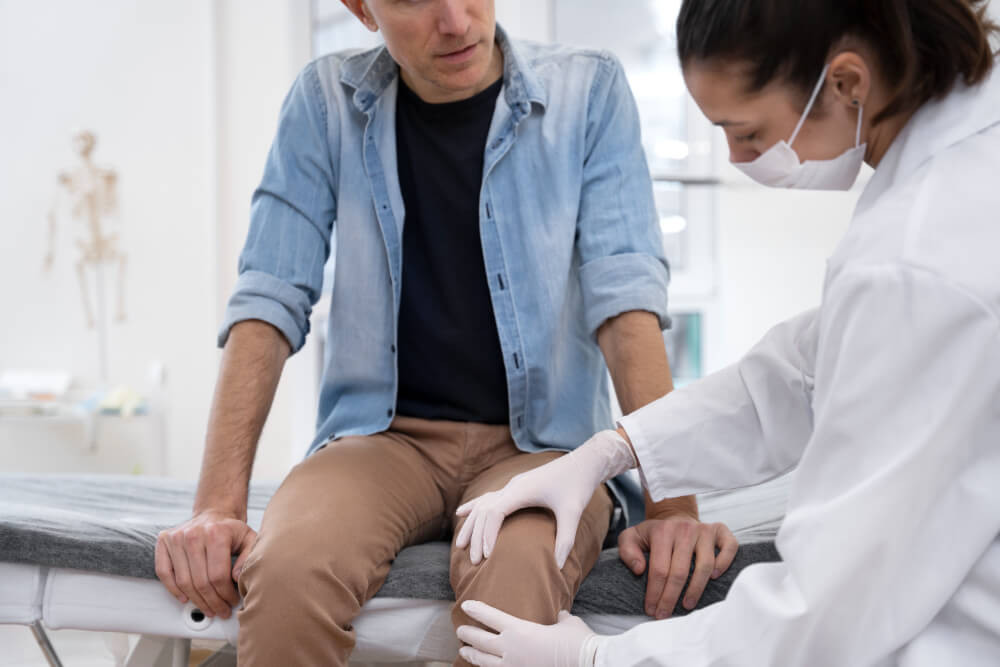Understanding Joint Injuries: A Comprehensive Guide by an Orthopedic Doctor
Joint injuries are a common occurrence, affecting people of all ages and activity levels. From sports injuries to age-related wear and tear, these injuries can cause pain, stiffness, and limitations in daily activities. While many minor joint injuries can be treated at home with rest and ice, certain situations warrant a visit to an orthopedic doctor for proper evaluation and treatment.
What Are Joint Injuries?
Definition of Joint Injuries
Joints are complex structures where two or more bones meet, enabling movement and flexibility. Joint injuries occur when any component—bones, cartilage, ligaments, tendons, or muscles—is damaged due to trauma, overuse, or degenerative conditions.
Common Types of Joint Injuries
Sprains
Sprains involve stretching or tearing of ligaments, often caused by sudden twisting or impact. Common sites include the ankle, knee, and wrist.
Strains
Strains are injuries to muscles or tendons caused by overstretching or overuse. These often occur in joints such as the shoulder or hip.
Dislocations
A dislocation happens when bones in a joint are forced out of alignment, often resulting in severe pain and limited movement.
Fractures
Fractures can occur near or within a joint, significantly impacting its function. These injuries are often the result of high-impact trauma.
Cartilage Injuries
Cartilage damage, such as a torn meniscus in the knee, is common in athletes and can lead to pain and restricted motion.
Arthritis
While not always classified as an injury, arthritis involves joint inflammation and degeneration, often resulting from wear and tear or autoimmune conditions.
Causes of Joint Injuries

Traumatic Events
Trauma from accidents, falls, or sports can directly damage joint structures, leading to acute injuries such as dislocations or fractures.
Overuse and Repetitive Strain
Repetitive motions in activities such as running or typing can cause microtrauma to joint tissues, leading to chronic injuries over time.
Aging and Degeneration
As we age, the cartilage cushioning our joints can wear down, leading to arthritis and an increased risk of injury.
Genetic and Environmental Factors
Some people are genetically predisposed to conditions like osteoarthritis or joint laxity, which can increase the likelihood of injuries.
Symptoms of Joint Injuries
Pain and Tenderness
Pain can range from mild discomfort to severe, disabling agony, depending on the type and extent of the injury.
Swelling and Inflammation
Swelling often accompanies joint injuries as the body’s natural response to trauma.
Stiffness and Limited Range of Motion
Injuries can restrict movement, making everyday activities challenging.
Instability
Injuries such as ligament tears may cause the joint to feel unstable or “give out.”
Visible Deformity
In cases like dislocations or fractures, the joint may appear visibly misshapen.
Treatment Options for Joint Injuries
Non-Surgical Treatments
Rest, Ice, Compression, and Elevation (R.I.C.E.)
This method is effective for minor injuries, reducing pain and swelling.
Physical Therapy
Physical therapy helps restore strength and mobility, preventing long-term stiffness.
Medications
Anti-inflammatory drugs and pain relievers can manage symptoms and promote healing.
Injections
Corticosteroid or hyaluronic acid injections can reduce inflammation and provide lubrication in arthritic joints.
Surgical Treatments
Arthroscopy
A minimally invasive procedure, arthroscopy involves using a small camera to diagnose and treat joint issues.
Joint Repair
Surgical repair of torn ligaments or cartilage can restore joint function.
Joint Replacement
In severe cases, such as advanced arthritis, joint replacement surgery may be necessary.
Fracture Fixation
For fractures near or within a joint, fixation with screws, plates, or rods may be required.
Preventing Joint Injuries
Strengthening Exercises
Building muscle strength around joints provides better support and reduces injury risk.
Proper Technique and Equipment
Using correct techniques and appropriate gear in sports or physical activities minimizes strain on joints.
Weight Management
Maintaining a healthy weight reduces stress on weight-bearing joints such as the knees and hips.
Regular Stretching
Stretching increases flexibility, which can prevent overstretching injuries.
The Role of the Orthopedic Doctor
- Comprehensive Evaluation:
- Conduct a thorough physical examination, assessing range of motion, strength, and stability.
- Order diagnostic tests, such as X-rays, MRI scans, or ultrasound, to identify the extent of the injury.
- Treatment Planning:
- Develop a personalized treatment plan based on the specific diagnosis, the severity of the injury, and the patient’s individual needs and goals.
- Non-Surgical Treatment Options:
- Explore non-surgical treatment options first, such as:
- Rest and ice:
- Applying ice packs to reduce inflammation.
- Immobilization:
- Using braces, splints, or slings to support the injured joint.
- Physical therapy:
- Undergoing physical therapy to improve range of motion, strength, and function.
- Medications:
- Using pain medications and anti-inflammatory medications to manage pain and inflammation.
- Rest and ice:
- Explore non-surgical treatment options first, such as:
- Surgical Treatment Options:
- When necessary, recommend surgical interventions, such as arthroscopy (minimally invasive surgery), to repair damaged ligaments, tendons, or cartilage.
- Rehabilitation:
- Oversee the rehabilitation process, ensuring a smooth and effective recovery.
Conclusion
Joint injuries can significantly impact daily life, but with the right diagnosis and treatment from an orthopedic doctor, recovery is achievable. By understanding the causes, symptoms, and prevention methods, patients can take proactive steps toward maintaining joint health and enjoying an active lifestyle.
Contact our orthopedic doctor for expert joint injuries treatment (214) 949-8918 Or visit us https://orthoxpress.co/locations/farmers-branch/

